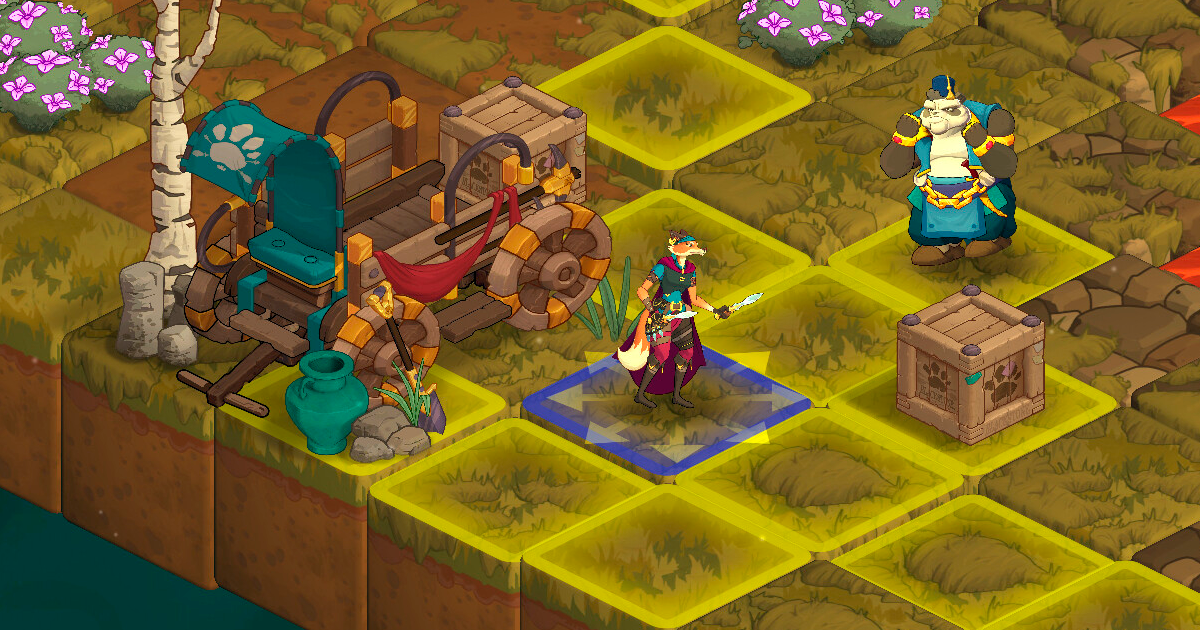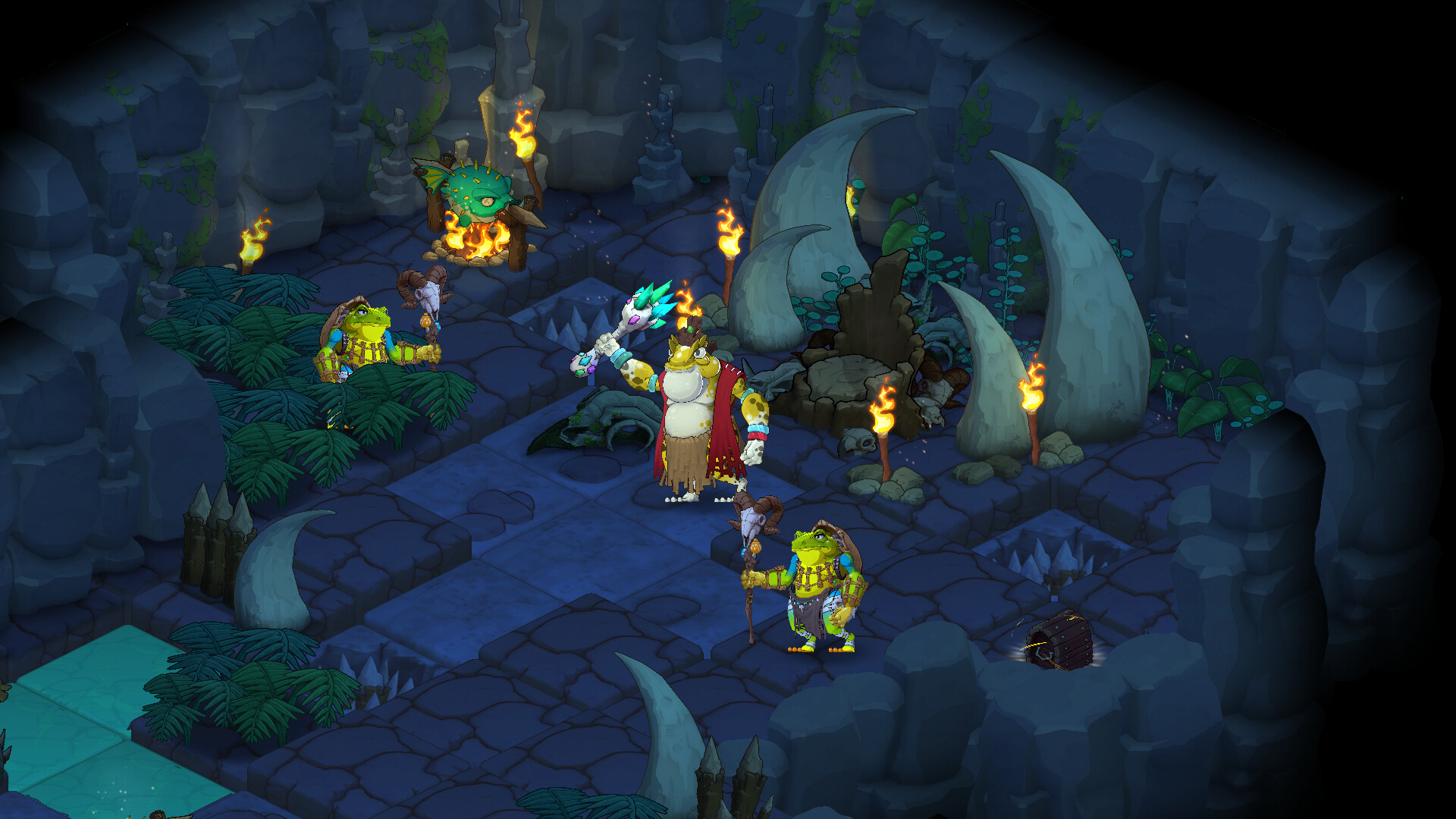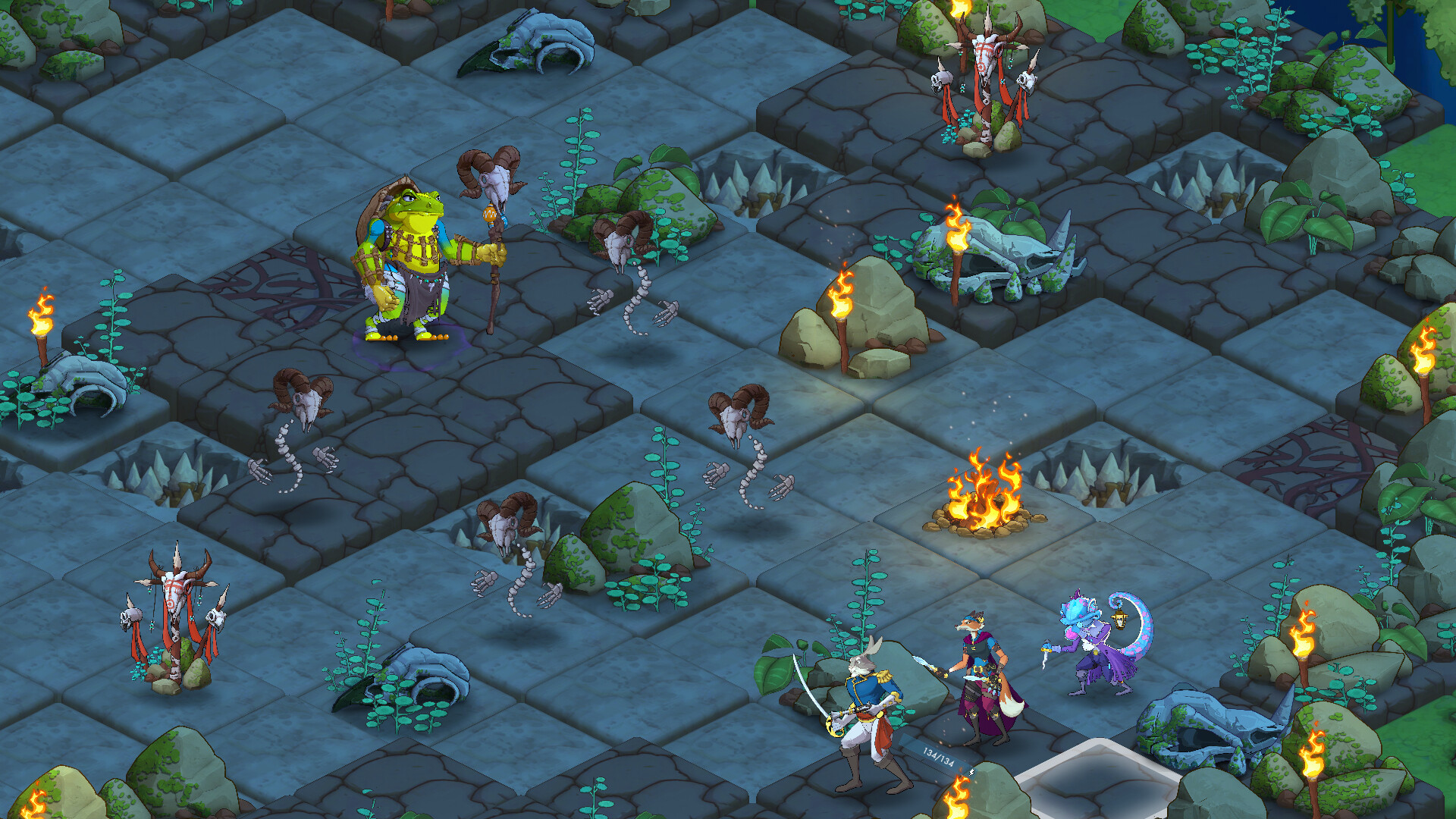The indie team from the Netherlands Grumpy Owl Games shared their experience of working on a turn-based combat system with App2Top.
Untamed Tactics
Introduction about the team and its project:
Grumpy Owl Games was founded in 2017. This is a small team: it employs less than 10 people. Previously, the studio mainly produced mobile versions of board games. She also has her own board game based on the original franchise.
Now all the efforts of the team are focused on the development of the Untamed Tactics desktop project. This is a turn-based role-playing tactic with a procedurally generated world about animal battles. Its publication is handled by the company Ravenage.
The questions were answered by Milan Lefferts, the director of the game.
In which case is it better to choose a turn-based combat system for the game?
Milan Lefferts
Do you prefer turn-based games? Make a game with a turn-based combat system.
Joke.
Seriously, games with a turn-based combat system are aimed at a separate, very special audience. She not only has different gaming preferences, she also plays differently.
Actually, everything is obvious here: since time freezes in turn-based games until the end of the turn, players always have a minute to think, take their time.
And, if we talk about Untamed Tactics, then our choice was primarily due to the desire to make a project where the player does not need to hurry.
From the moment we started working on the game, we wanted it to be about strategic choice, about making decisions in a calm environment. The combat system, the dynamics of which the player is responsible for, was ideally suited for this.
What is the first thing to think about when working on a turn-based combat system?
One of the most important questions when it comes to the combat system for us is: what kind of experience should the player get?
The answer to this question may change over time. The reasons may be different: the iterative nature of game design, the results of playtests, marketing research, and even a change in the visual style of the game.
When working on Untamed Tactics, we wanted to achieve two things:
- make tactical combat close to Final Fantasy Tactics in terms of the characters having a huge number of unique spells and abilities;
- at the same time, bring the nature of the characters’ interaction on the battlefield closer to Into The Breach, where most of the attacks shift units from the cells they occupy or pull them up to the attacker.
For what reasons did the answer to the question change with us?
First of all, because of the iterative nature of the design. It was only as we worked on the game that we began to understand what works and what doesn’t if we mix such different combat systems.
Secondly, because of budget constraints. As a result, we couldn’t afford to draw characters from each side. Because of this, we had to give up the opportunity to visually put the figures of the characters “nose to nose”. As a result, all sprites are always turned to face the player.
This limitation has led us to focus on the variability of status effects and unique abilities.
Untamed Tactics
How many indicators should be embedded in the combat system?
A good combat system can be as simple as possible. The main thing is that the main actions are well felt by the player.
It is clear that sensations are a subjective concept. However, keeping in mind the question (what should ideally be the player’s experience), try to come to a version of your combat system that, on the one hand, will be simplified as much as possible, and on the other, will offer the same experience.
That’s where it’s worth starting. It will be possible to complicate the fight by adding many types of resistance and various types of damage later.
As for Untamed Tactics, since tactical RPGs are complex beasts by nature, it took us a very (no, not so, VERY) long time to bring the basis of the combat system to mind.
That was a problem. Due to the fact that the basis of the game did not work, we could not understand how other systems would affect the gameplay. In the end, we managed, but when developing the next game, the first thing we will focus on is creating and polishing the basics. We will start adding new elements and systems only after it starts working.
Should there be hidden metrics in the game? How much should the combat system be transparent and obvious to the player?
Balancing information hidden from the player is a delicate task. Go too far and the game will become unpredictable. You will be as transparent as possible — and the game will be calculated in advance.
Let’s take for example such a parameter as the chance of causing critical damage. The attribute itself is visible (the player knows that such and such a hero has such and such a chance to inflict critical damage). However, the player does not know when exactly the attribute will work. In other words, we are talking about unpredictability, which can both upset and please, depending on how the behavior of the attribute is balanced relative to other variables (both hidden and visible).
In the case of Untamed Tactics, we decided to minimize randomness.
Randomness in combat is mainly related to three variables — the chance to dodge, the chance to deal critical damage and the variability of damage.
As for the hidden parameters, we have only those that are responsible for the enemy AI and procedural generation.
Untamed Tactics
By what formula is it better to calculate damage? Which approaches are most common?
It is very difficult to formulate best practices for calculating damage, because everything depends on the nature of the game.
Damage calculation can be either fixed or percentage.
During the development of Untamed Tactics, we changed the percentage system of damage calculation several times. We were looking for one that, on the one hand, would be understandable and calculable by the player, and on the other hand, would be interesting to him.
In our case, the damage calculation takes into account the types of resistances, the chance of critical damage, the number of attacks in each round, the chance to dodge, the level of characters, and so on.
Should the order in the fight be static or is it better that it is calculated separately for each round and takes into account the imposed buffs and debuffs?
The order of the move is another aspect of combat mechanics, which largely depends on the task set before the game.
For example, in Dungeons & Dragons, the turn sequence is set at the beginning of the battle by the initiative (it is determined for each participant of the battle as follows: a d20 die is thrown, and then the dexterity value is added to the number that falls out).
This facilitates both understanding and planning. However, such an approach can lead to the fact that the fight will be boring and predictable.
In games where a lot can happen in one move (for example, in 4X strategies), the variability in the order of the move is too much. And so you have to keep a huge number of things in your head. Therefore, it is better to be simpler and more predictable within this aspect.
At Untamed Tactic, the sequence of moves is dynamic. At the beginning of each round, the game determines the order of each hero’s turn based on the speed characteristic. A similar approach:
- gives the battle more dynamics;
- allows you to influence the order of the move directly;
- increases the number of useful buffs/debuffs.
Untamed Tactics
How to balance the system from scratch, when metrics and their values are only being prescribed?
It is well known that players do not want the game to be balanced, they want the game to be perceived that way.
In other words, the developers’ task is not to balance the game, but to make it seem balanced to the players.
For example, if Untamed Tactics followed mathematical rules, then a 50% chance of critical damage would upset players, not please. People don’t know how to count probabilities. They would expect critical damage on every second attack.
Creating a system that would compensate for this moment (increase the chance of a critical strike in accordance with the perceived balance), would allow the game to be perceived as more honest, despite the fact that it would essentially play along with the user.
We use a system in which a 50% chance of a critical hit means that every next attack is critical. Such a system feels better, although it has nothing to do with real work with probabilities.
How to balance the characters?
The more passive and active skills, abilities, and parameters there are in the game, the more difficult it is to balance it.
To cope with the balance when working on Untamed Tactics, we created an internal system of uniform values. In it, each parameter and ability received a certain score.
For example, each attack unit received two points, and each bleeding unit received one and a half points.
This technique allowed us to balance the characters based on how many points each of them scored in total.
Untamed Tactics
And the last question: which is better hexes or squares?
Personally, I like squares more. However, again, a lot depends on what kind of experience the game wants to offer the player.
Most modern tactical games use hexes, because they give more freedom in movement, allow you to attack from different sides.
In Untamed Tactics, we decided to turn to the “old school” and chose a system in which the field is divided into squares. Such an approach gives less freedom, less room for tactics, but personally it is easier for me to work with it, it is easier to calculate how a player will act in a given situation.
The choice of squares in our case was also largely due to our sources of inspiration — classic tactical RPGs. And if the square grid in our game reminds the players at least a little about Final Fantasy Tactics, it means that we did not try in vain.






